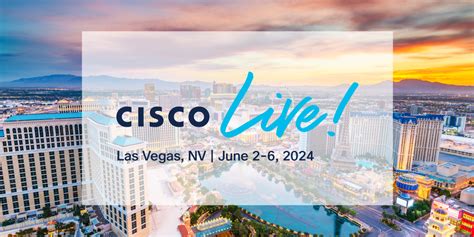Cisco’s annual event, Cisco Live 2024, has seen a huge number of new AI-powered innovations and investments from a Cisco as they took to the stage in Las Vegas. This year the focus has been about powering the AI transformation and has been particularly impactful with the introduction and expansion of AI-enriched solutions across networking, security, and observability domains.
Here’s my take aways from the event based on snipits I watched and blogs from Cisco I’ve read over night on how these advancements are set to further transform the tech industry across almost almost every vertical.
Digital Resilience Through AI
Cisco talked about how their AI-powered innovations which are heavily focussed on the platform that drives transformation (the network and connectivity) are designed to enhance digital resilience, combining the power of the network with industry-leading security and observability. This integration simplifies adoption and provides comprehensive visibility across the digital landscape.
$1 Billion AI Investment Fund
Cisco annouced a new Global AI Investment Fund in a bold move to foster industry innovation and customer readiness and likely help them fund and invest into future aquisitions which is becoming common in the industry with start up innovation and backing. This strategic initiative supports Cisco’s vision of an AI-powered future, connecting and protecting organisations of all sizes through Cisco innovative networking and secure cloud technology platforms.
New Strategic Initiatives
Cisco’s collaboration with industry giants like NVIDIA, Splunk (who they aquired earlier this year) , and others, showcases its commitment to customer success and growth. Cisco referenced some of their largest clients including Steve Madden and McLaren F1 Racing that see Cisco continuing to play a vital role as a strategic ally in business and technology across their entire portfolio from network, security observability and collaboration.
New certifications to empower partners
Designed to prepare partners and ensure skills for the AI powered future, Cisco annouced new AI Fundamentals for their Partners including a new Certification in AI. Cisco plan to ensure they continue to equip partners and the workforce with the necessary skills to thrive in an AI-driven landscape which shows no sign on flowing down.
New innovations to their portfolio announced
Cisco has also announced new AI-powered features for their contact center solutions at Cisco Live 2024. These include.
- New capabilities in Webex Contact Center will help organizations design and manage conversational self-service experiences. . This means businesses can automate their customer service to a greater extent, improving efficiency and customer satisfaction.
- An AI Assistant is being provided for contact center agents. This assistant can help agents handle customer queries more effectively and efficiently, leading to improved customer service.
- Cisco is also enabling the integration of third-party virtual agent solutions into their contact center offerings12. This allows businesses to leverage a wider range of technologies and services to enhance their customer service.
There is no AI without data and networking
With Cisco networking already the motorway for connectivity inside data centres, organisations IT and for connecting people, things and devices:
- Nexus HyperFabric AI clusters. This is a “breakthrough” AI cluster solution developed in collaboration with NVIDIA and provides a single place to design, deploy, monitor, and assure AI pods and data center workloads. This means businesses can manage their AI workloads more efficiently and effectively.
- Cisco Hypershield support for AMD Pensando DPUs and Intel IPUs,which Cisco say will enables enterprises to “realize an AI-driven, distributed security architecture” that seamlessly goes from the cloud to the data centers to the edge while still being highly performing and energy efficient.
- Cisco will also combine the the power of the Splunk with their AppDynamics Application Performance Monitoring (APM) with the introduction of Splunk Log Observer for Cisco AppDynamics. This integration will enable users to drive faster troubleshooting across on-prem and hybrid environments.
Excitement overdrive
As a leading UK Cisco Partner, Cisco Live brought excitement to our teams and will give new innovation enablement for Cisco customers.
Cisco’s innovations will help us continue to help out customer build a more resilient, intelligent, and secure digital environment.
We’re thrilled to share incredible innovation and new AI-powered capabilities for our customers this week at Cisco Live… Cisco is uniquely positioned to revolutionize the way infrastructure and data connect and protect organizations of all sizes, and we are confident we are the right strategic partner for our customers in this era of AI.”
Chuck Robbins |Chair and CEO | Cisco.
For Cisco, it represents a step forward in leading the industry towards an inclusive AI-powered future. And for partners like Cisilion, it’s an opportunity to leverage these advancements to deliver cutting-edge solutions to our clients.
It’s not over yet.
Stay tuned for more updates from Cisco Live 2024, as we continue to explore the possibilities of AI and its impact on the world of technology.
Read more at Cisco
What are you most excited about for Cisco Live and what were you hoping they annouced and didn’t?


















Leave a Reply